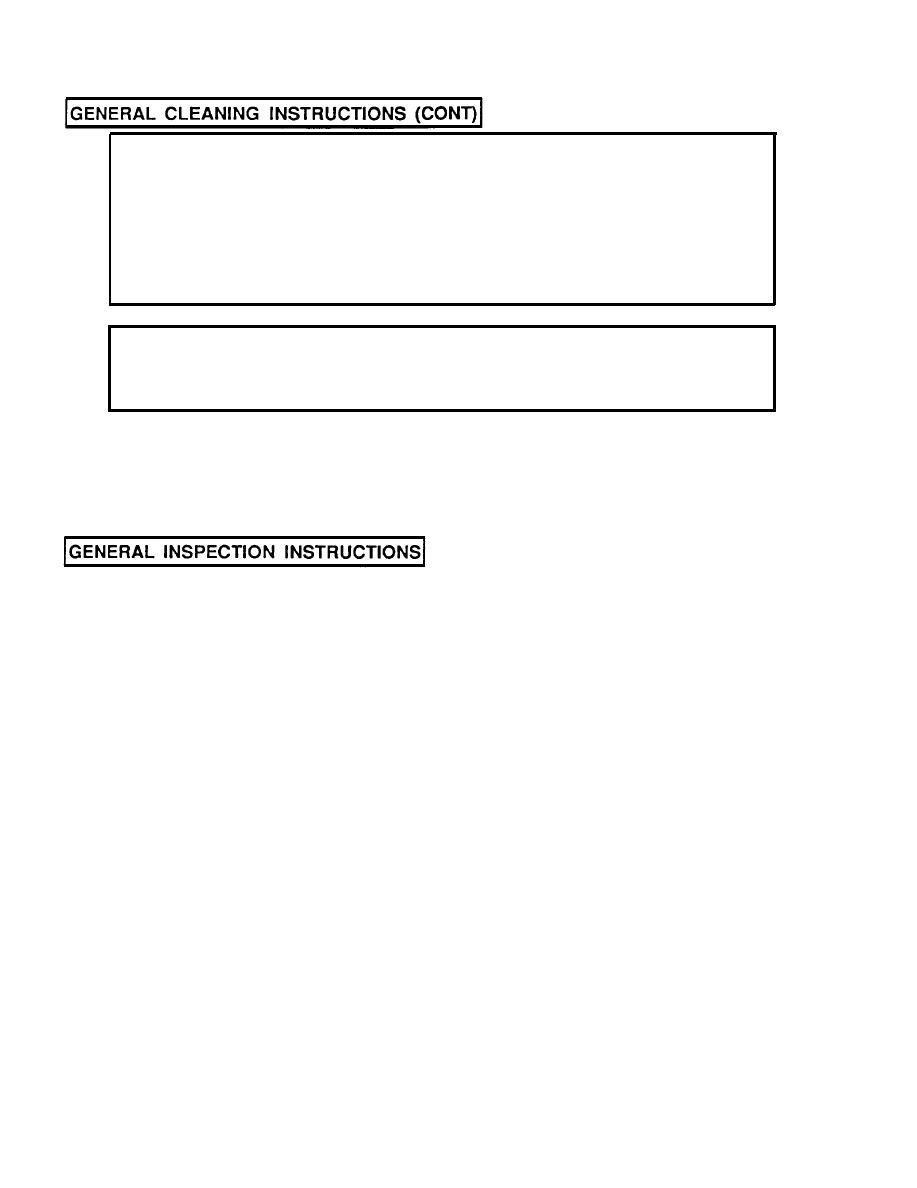 |
|||
|
|
|||
|
Page Title:
General Inspection Instructions |
|
||
| ||||||||||
|
|
 TM 5-2420-224-20-1
WARNING
Drycleaning solvent P-D-680 is toxic and flammable. Wear protective
g o g g l e s and gloves and use only in well-ventilated area. Avoid contact with
s k i n , eyes, and clothes and do not breathe vapors. Do not use near open
f l a m e or excessive heat. Flash point is 100-138F (38-50 C). If you
become dizzy while using drycleaning solvent, get fresh air immediately and
g e t medical aid. If contact with eyes is made, wash your eyes with water
a n d get medical aid immediately.
CAUTION
To prevent damage to equipment, never use gasoline or other petroleum-base
p r o d u c t s to clean or preserve hydraulic system parts.
14
Hydraulic System. When cleaning hydraulic system parts, use drycleaning solvent SD-2
(P-D-680). Clean and dry parts thoroughly to make sure no residue remains. If a coating of
preservative is required before assembly, apply a light film of solid lubricant preservative. If
petroleum-free solvents are not available, use the same hydraulic fluid as used in the hydraulic
system.
1.
Sealing Surfaces. Inspect all surfaces in contact with gaskets, packings, or seals. Make sure
there are no nicks, burrs, or scratches. If any defect is found, remove or repair it as outlined
under General Repair Instructions in this manual.
2.
Bearings. Check bearings for rusted or pitted balls, races, or separators. Check balls and races
for brinnelling, abrasion, and serious discoloration. Refer to TM 9-214 for additional instructions
for bearings. Following are causes for bearing rejection:
Cuts or grooves parallel to ball or roller rotation.
Fatigue pits (not minor machine marks or scratches).
Cracks.
Inspection. Inspection consists of checking for defects such as distortion, wear, cracks, and
3.
pitting. Parts under heavy load or pressure must be inspected more thoroughly. Clean all parts
before inspection.
4.
Drain Plugs. When removing drain plugs from transmission, engine, or hydraulic system
components, inspect sediment adhering to plug. A buildup of grit and/or fine metal particles
may indicate part failure. A few fine particles are normal. This inspection is effective in
determining defective parts prior to internal inspection of parts.
5.
Gears. Gear inspection cannot be described in detail here: there are too many differences in
size and shape of gears. The following steps can be used to make a general visual inspection
of all gears. Follow all steps listed in General Repair instructions for final inspection.
Normal Wear. Loss of metal from the surface of gear teeth. Wear must not prevent gears
from meshing or performing properly.
Initial Pitting. This may occur when a pair of gears is first started in service. It may
continue until most high spots have been reduced, as long as contact surfaces are not
affected. This pitting is not necessarily serious.
2-18
|
|
Privacy Statement - Press Release - Copyright Information. - Contact Us |